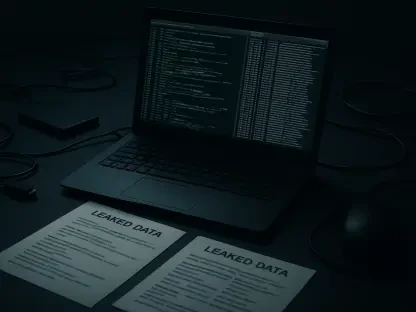In response to the escalating security risks posed by artificial intelligence (AI), the New York Department of Financial Services (NYDFS) released new guidelines urging companies to adopt stronger multifactor authentication (MFA) practices. The guidance, issued on October 16, 2024, specifically targets NYDFS-regulated entities, emphasizing the need for advanced security measures to counter sophisticated AI-driven cyber threats.
Rising Cybersecurity Risks from AI
The financial sector has increasingly become a target for cybercriminals exploiting AI technologies to launch more efficient and large-scale attacks. These threat actors are using AI to enhance traditional attack vectors, making them harder to detect and thwart. One significant concern is the use of deepfakes—AI-generated hyper-realistic images or videos—that can deceive employees and customers alike, potentially leading to unauthorized transactions and data breaches.
The Growing Threat Landscape
AI-enabled attacks, such as AI-enhanced phishing and social engineering, are becoming more prevalent. Traditional security measures are proving inadequate against these evolving threats. As AI continues to advance, its capacity to simulate legitimate interactions with users can bypass existing security protocols, highlighting the urgent need for updated, robust security frameworks.
The rising sophistication of AI-driven cyberattacks necessitates a recalibration of existing cybersecurity measures. Traditional security protocols, such as password-based systems, are no longer sufficient to ward off AI-enhanced threats effectively. These advanced threats are capable of manipulating trusted networks and can exploit system vulnerabilities with unprecedented speed and accuracy. Consequently, organizations must prioritize the development and implementation of new defensive measures to protect sensitive data and secure financial transactions.
Implications of AI-Enhanced Attacks
As AI technologies become more advanced and accessible, the potential for highly personalized and believable phishing attacks has dramatically increased. AI-driven tools can scrape social media profiles and other online platforms to gather personal information, crafting bespoke messages that appear genuine to the recipients. This level of personalization increases the likelihood of successful phishing attempts, making it crucial for organizations to educate their employees and customers about these sophisticated tactics and how to recognize them.
Moreover, the use of AI in developing deepfakes poses a significant challenge for regulatory compliance and security. By creating lifelike digital manipulations, cybercriminals can execute fraudulent activities such as unauthorized access to accounts and unauthorized financial transactions. This calls for the adoption of more stringent verification processes to ensure the authenticity of interactions, ensuring a higher level of security for valuable digital assets and personal information.
Mandatory Use of MFA
As part of the NYDFS guidance, starting in 2025, the use of multifactor authentication (MFA) will be mandatory for accessing nonpublic information (NPI). This move underscores the necessity of evolving from single-factor authentication methods, which have become increasingly vulnerable to AI-driven attacks. The shift towards MFA ensures that users provide two or more verification factors, substantially boosting overall security.
NYDFS’s New MFA Requirements
The NYDFS’s mandate underscores the critical importance of adopting multifactor authentication (MFA) to secure nonpublic information (NPI). With the rise of AI-driven cyber threats, relying solely on single-factor authentication methods, such as passwords, has proven insufficient. Starting in 2025, NYDFS-regulated entities will be required to implement MFA, which often involves a combination of knowledge (password), possession (security token), and inherence (biometric) factors, adding layers of security that are significantly harder for cybercriminals to bypass.
This new requirement aims to address the emerging vulnerabilities that AI technologies exploit, ensuring that even if one authentication factor is compromised, additional layers provide a robust defense against unauthorized access. The NYDFS guidance highlights that MFA should incorporate advanced technologies such as digital certificates and physical security keys, which are resilient against AI-based attacks. This proactive measure sets a precedent for other regulatory bodies to follow, aiming to create a secure financial ecosystem capable of withstanding the sophisticated capabilities of AI-driven threats.
Advanced Authentication Methods
The NYDFS guidance emphasizes the necessity of incorporating advanced authentication technologies that AI solutions cannot easily spoof. Digital certificates and physical security keys are singled out as particularly effective due to their resistance to AI-manipulated intrusion attempts. By providing users with physical devices or unique digital credentials that cannot be replicated by AI, the security of nonpublic information is significantly bolstered.
Additionally, the inclusion of biometric-based authentication methods, such as fingerprint, facial recognition, and iris scanning, is encouraged to create a multifaceted security protocol. By combining these biometric methods with traditional MFA, companies can enhance their defense mechanisms significantly. The guidance also suggests integrating “liveness” detection technologies in biometric systems to verify that the biometric input is from a live person rather than a static image or synthetic creation, thereby adding a critical layer of protection against AI-generated deepfakes.
Enhanced Biometric Authentication
One of the key aspects of the NYDFS guidance is the recommendation to use “liveness” detection technology in biometric authentication. Liveness detection ensures that the biometric input is from a live person rather than a static image or a synthetic creation. This kind of verification adds a critical layer of security, effectively countering AI-generated deepfakes.
Liveness Detection Technology
Incorporating liveness detection technology into biometric authentication adds a critical layer of defense against AI-generated threats. This technology works by ensuring that the biometric input being provided, whether it be a fingerprint, facial recognition, or iris scan, is from a living person and not a static image or sophisticated AI synthesis. Such measures are particularly important in a landscape where AI technologies can easily replicate and fabricate biological data.
Liveness detection can be achieved through various methods, such as detecting micro-movements, analyzing skin texture, and assessing the light reflection patterns of the eye. These techniques make it considerably more challenging for attackers to bypass security systems using deepfake technology. By implementing liveness detection, organizations can verify the authenticity of the biometric input, thereby protecting their systems and sensitive data from fraudulent access.
Multi-Modal Biometric Checks
The NYDFS guidance goes further by recommending the adoption of multi-modal biometric checks, which involve using multiple biometric modalities simultaneously. Combining fingerprint recognition, facial recognition, and iris scanning in the authentication process creates a complex security protocol that is much harder for threat actors to circumvent. This multi-layered approach ensures that even if one biometric modality is compromised, additional modalities provide a fail-safe.
This strategy not only enhances security but also improves the user experience by providing a seamless and quick authentication process. Multi-modal biometric checks also mitigate the risks associated with individual biometric technologies, such as issues of accessibility or environmental factors that might affect the accuracy of a single biometric input. By requiring multiple, diverse biometric inputs, organizations can ensure a higher level of security, making it increasingly difficult for cybercriminals to breach their systems.
Third-Party and Vendor Oversight
The NYDFS guidance also emphasizes the critical need for thorough and ongoing cybersecurity risk assessments. Companies are advised to continuously evaluate their security frameworks to identify and mitigate vulnerabilities related to AI and MFA technologies. These assessments ensure that entities remain vigilant and adaptive to the evolving threat landscape.
Importance of Risk Assessments
Conducting regular and comprehensive cybersecurity risk assessments is paramount to maintaining robust security frameworks. The NYDFS guidance advises companies to implement ongoing evaluations of their security measures, identifying and mitigating vulnerabilities related to AI and multifactor authentication (MFA) technologies. These risk assessments should be an integral part of the organization’s cybersecurity strategy, enabling them to keep pace with the rapidly evolving threat landscape.
Risk assessments involve a detailed analysis of potential vulnerabilities within an organization’s infrastructure, including hardware, software, and human factors. By identifying weak points and predicting possible attack vectors, companies can develop and implement targeted countermeasures to fortify their defense mechanisms. Continuous risk assessment and adaptation are essential to ensure that entities are prepared to respond effectively to the sophisticated and ever-changing tactics employed by cybercriminals.
Vendor and Supply Chain Security
Given the interconnected nature of modern business operations, the guidance highlights the importance of scrutinizing third-party vendors. Enhanced oversight and stringent cybersecurity protocols for vendors can help mitigate risks that originate from the supply chain. Maintaining high standards of security across all partners and vendors is crucial to protecting sensitive information.
The NYDFS explicitly advises companies to perform thorough due diligence on their third-party vendors, ensuring that these partners adhere to equally stringent cybersecurity standards. This includes evaluating the security measures that vendors have in place, monitoring their compliance with industry regulations, and establishing clear contractual obligations regarding data protection and incident response. By fostering a culture of security throughout the supply chain, organizations can significantly reduce the risk of third-party vulnerabilities compromising their systems and sensitive information.
Implications for Financial Entities
Financial institutions, insurers, and money transmitters under NYDFS regulation must adapt their cybersecurity frameworks to align with the new MFA guidance. This includes integrating advanced authentication technologies and regularly updating security protocols to keep pace with AI advancements and emerging threats.
Adapting Cybersecurity Frameworks
The implementation of the NYDFS guidance necessitates significant adjustments to the existing cybersecurity frameworks of financial institutions, insurers, and money transmitters. These entities must prioritize the integration of advanced authentication technologies, such as multifactor authentication (MFA), to secure nonpublic information (NPI). Regular updates and enhancements to security protocols are crucial to aligning with the evolving capabilities of AI and countering the sophisticated nature of AI-driven cyber threats.
Adapting cybersecurity frameworks involves a comprehensive approach that includes technological advancements, employee training, and continuous monitoring. Organizations must ensure that all staff members are educated about the new security measures, understanding their roles in maintaining system integrity. Additionally, implementing advanced monitoring tools can help detect and respond to potential threats in real-time, providing an additional layer of protection against AI-driven attacks.
Proactive Security Measures
The NYDFS guidance emphasizes the importance of adopting proactive and preventative cybersecurity measures. Entities regulated by the NYDFS are encouraged to stay ahead of potential threats through continuous risk assessments and the adoption of multifaceted authentication methods. This forward-looking strategy is essential for maintaining robust security in an era of rapid technological change.
By implementing a proactive approach, organizations can identify and mitigate vulnerabilities before they are exploited by cybercriminals. This involves not only upgrading authentication technologies but also investing in advanced threat detection and response systems. A proactive posture enables financial entities to anticipate and counteract emerging threats effectively, safeguarding their sensitive information and financial resources against the increasingly sophisticated tactics of AI-driven attackers.
Looking Towards the Future
As AI technologies continue to evolve, so too must the cybersecurity measures designed to counteract them. The NYDFS’s new guidance is a critical step in fortifying the defenses of financial entities against increasingly sophisticated AI-driven threats. Moving forward, the adoption of advanced MFA and comprehensive risk assessment protocols will be pivotal in maintaining a secure financial ecosystem.
Evolution of Cybersecurity
The ever-accelerating pace of AI development necessitates continuous evolution in cybersecurity measures. The NYDFS’s guidance represents a critical step towards fortifying defenses against the sophisticated threats posed by AI technologies. As cybercriminals become more adept at leveraging AI for malicious purposes, financial institutions must remain vigilant and adaptive, constantly updating their security protocols to stay one step ahead.
Moving forward, the integration of advanced MFA solutions and comprehensive risk assessment protocols will be key to maintaining a secure financial ecosystem. By keeping pace with AI advancements and the resulting cybersecurity challenges, entities can better protect their sensitive information and financial resources. The NYDFS’s guidance sets a precedent for other regulatory bodies to follow, promoting a unified approach to combating AI-driven cybersecurity threats across the financial sector.
Building a Secure Digital Economy
In light of the growing security risks associated with artificial intelligence (AI), the New York Department of Financial Services (NYDFS) has rolled out new guidelines, urging companies to strengthen their multifactor authentication (MFA) protocols. Released on October 16, 2024, these guidelines are directed at entities regulated by the NYDFS. The emphasis is poignantly placed on the adoption of advanced security measures aimed at combating increasingly sophisticated cyber threats powered by AI technologies.
These guidelines highlight the importance of safeguarding sensitive data and assets from AI-driven cyber attacks that are becoming ever more complex. As AI continues to evolve, so do the tactics of cybercriminals, necessitating robust defense mechanisms. Multifactor authentication is a crucial security layer that requires multiple forms of verification, making unauthorized access significantly difficult. This becomes especially vital for financial institutions that manage vast amounts of personal and financial information.
NYDFS’s call to action serves as a proactive step to ensure that regulated companies are not only aware of but are also prepared to address the dynamic landscape of cyber threats. This initiative is part of a broader effort to secure the financial sector, protect consumer data, and maintain trust in digital transactions. Adopting these enhanced authentication measures is expected to mitigate potential risks, thereby fortifying the overall cybersecurity framework within the financial services industry.









